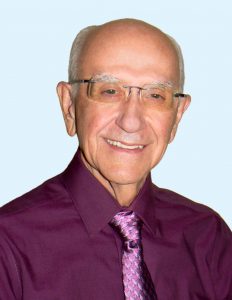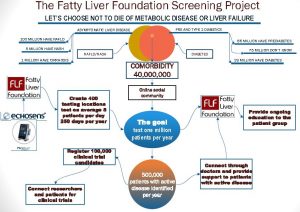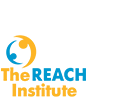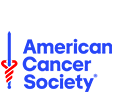NASH: A Disease without Symptoms but Lots of Hope
What if you had a liver disease but nobody told you until it was too late?

Wayne Eskridge, Fatty Liver Foundation
Typically, nonalcoholic fatty liver disease (NAFLD) and nonalcoholic steatohepatitis (NASH) are silent diseases. They have no symptoms. Even if cirrhosis has developed, there are often no symptoms until the liver has become so damaged that the only option is a liver transplant.
Early screening for NASH is essential, but obstacles abound. While there is a quick, easy and economical method to screen for fatty liver disease, it is not widely available and screening in the absence of symptoms is often not part of standard medical practice policy. Medical coverage for the test also may not be available if the patient isn’t sick or doesn’t have symptoms.
Fatty Liver Foundation Screening Project
The Fatty Liver Foundation advocates for early screening. Our plan is to deliver liver care screening for the estimated 40 million co-morbid diabetes/NAFLD/NASH patients. This patient group is our initial target for screening because up to 70 percent of type 2 diabetics have undiagnosed liver disease. The project’s long-term goal is to have 400 testing locations seeing one million patients a year.

The screening project is currently in its pilot phase. The first installation is in the greater Houston area and the purpose is to gather real world data on self-selected patients and to test methods and procedures to provide guidance to the larger project to follow. The study is being conducted as a formal study which can be read here as NCT03726827 on ClinicalTrials.gov.
State of Liver Research
While attending the 2018 meeting of the American Association for the Study of Liver Diseases (AASLD), I was struck by the sheer volume of research going into NAFLD/NASH/cirrhosis and how the evolution of new tools and probes coming from the broader arena of basic science is helping us along our journey to understand the liver.
The black box nature of many of the liver’s functions is giving way to a real understanding of the specific chemical reactions between and within the cells. The study of lipids within the liver and body-wide is burgeoning, as fatty acids are both foundational molecules and dose-related substances involved with disease. The study of cellular response – such as how stellate cells are affective by different molecules — is robust.
Stepping up a level from how molecules work, researchers also are studying how the systems of body processes interact in ways that either lead toward health or toward dysfunction and illness. For example, scientists are investigating how liver fat responds to manipulation of certain thyroid hormones.
Then, we step out to see how body-wide functions like inflammation, wound management, tissue health, immune response and other processes lead to liver damage or may be recruited to promote healing. Here, the issue of comorbidity comes into focus as we look at the liver’s relationship with cardiovascular and diabetic disease, as examples.
The meeting also showcased the significant work being undertaken on non-invasive markers for primary care-level triaging of patients with active disease, but who present as symptomatic. One of the most interesting developments was the documentation of the role that Fib-4 might play in the process. There is growing evidence that Fib-4, and several other blood-based candidates used as filters for screening, can help to determine referral to a specialist.
As a patient, being able to see the depth and breadth of the effort whose goal is to save my life, and that of the millions of patients like me, was both humbling and exhilarating. The knowledge that research will lead to solutions makes the day-to-day easier to bear and gives us patients a reason to find hope.
About the Fatty Liver Foundation
The Fatty Liver Foundation is dedicated to identifying asymptomatic, undiagnosed Americans with liver fibrosis or early cirrhosis caused by fatty liver disease, and to educate them on the lifestyle changes needed to halt or minimize progression of the disease. Here is a link to a brief video about the Foundation. Founder and CEO Wayne Eskridge was diagnosed with cirrhotic NASH in 2010 and since then has been dedicated to learning as much as possible about the disease and to helping other liver disease patients. For more information, visit the Fatty Liver Foundation website, or connect via Twitter.
















